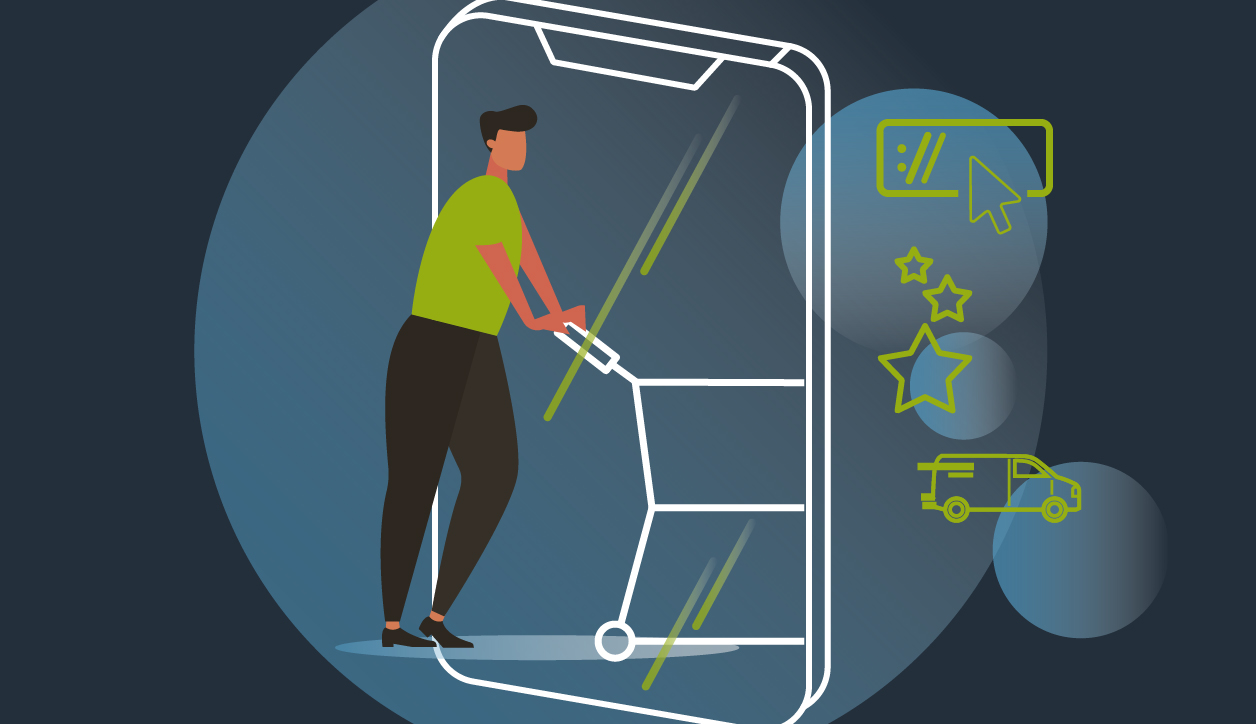
On June 15, the UK’s non-essential stores re-opened with all the expected fanfare – queues snaking around the block in front of Nike’s Oxford Street store, and Primark and TK Maxx in Manchester. Meanwhile in the US, where many stores re-opened in May, sales rebounded by a record 17.7% (although this was still a 6% drop compared to the same time last year).
But don’t be fooled. Even before the coronavirus pandemic, physical retail was already in an existential crisis. Ecommerce had been steadily taking share from bricks and mortar for years, forcing many brands to differentiate their offline experience through initiatives like augmented reality showrooms, beauty pop-ups, and celebrity events.
The explosion we’re seeing now is certainly sharper than the steady shift that was already underway, but it’s far from the “temporary normal” it has been called. What we’re seeing now is more or less a fast track – by one to two years, depending on your source – of a transition that was bound to happen anyway. Shopping’s “new normal” isn’t going anywhere, and here’s why.
New converts are hooked
The joys of online shopping may be old news for you and me. But for many demographics, particularly older shoppers, the discovery is a very recent one. The coronavirus has encouraged many to try online shopping for the first time, either by necessity or with a guiding hand from younger family members during quarantine. And they love it!
These people didn’t shop in stores because they preferred it, they just hadn’t experienced the convenience and flexibility of online shopping yet. And now that they have, why would they go back?
Physical retail is still problematic
Of course, for many consumers, high street shopping offers a tantalizing reprieve from the monotony of home confinement. But the fact of the matter is, physical retail is hardly “back to normal”.
Many stores remain subject to some fairly limiting safety requirements: re-configurations to accommodate social distancing; regular deep cleaning and sanitization; the introduction of face shields and Perspex screens. Not only do these factors detract from the unique charm of physical shopping (face-to-face service, holding an item in your hand or trying it on), they also remind us of the risks that remain. It’s hardly an experience to rival the safety and convenience of having your order delivered straight to your door.
And let’s not forget, while people are happy to queue in front of the Nike store in the middle of summer, I’m not expecting the same morale come October, when temperatures drop and rainfall threatens.
Peak season is coming
Physical stores may be able to handle the current wave of “lockdown fatigue” shoppers, but how will they cope with the traditional Peak period at the end of the year? Can you imagine a Boxing Day Sale with social distancing?
Ecommerce already exceeded the usual volume of the end-of-year peak in April, who knows what kind of demand we can expect by the time Black Friday is upon us. And for that matter, who knows what the world will look like by then – there are already signs of a second wave in the US and China. One thing’s for sure, physical retail can’t be relied upon to satisfy its usual share of the Peak demand.
The point of all this is not that physical retail is doomed, far from it. Offline will always have an important role to play within the overall mix, it just needs to figure out how to complement and differentiate itself from the online experience. This was already true before the pandemic and continues to be the case today. But of course, the optimistic retailer can’t spend much time bemoaning the limitations of physical retail when the opportunities of online are growing exponentially.
To make the most of these opportunities your brand must ensure it can offer a smooth, convenient and reliable online experience, from browsing right through to post-purchase. This means offering a range of delivery options; full transparency throughout delivery; as well as the data to inform these processes, and the scalability to meet an unpredictable fulfilment demand. It’s no longer enough just to ‘do’ online – the brands that will come out stronger on the other end of the coronavirus era will be those who do online well.
Learn about the impact of coronavirus on retail through our virtual series, Trading Through Disruption

